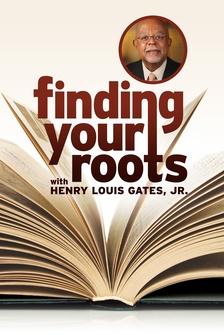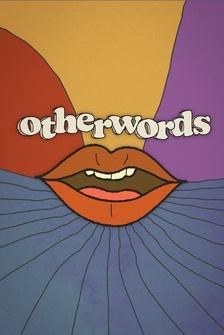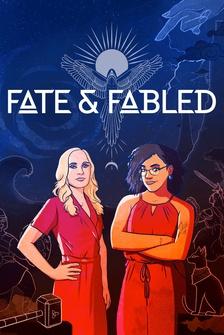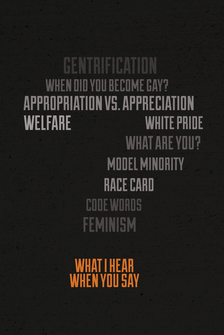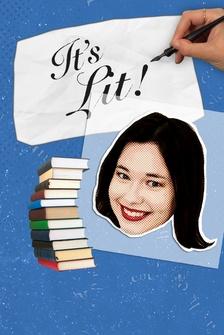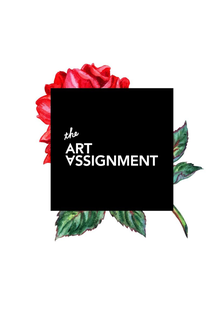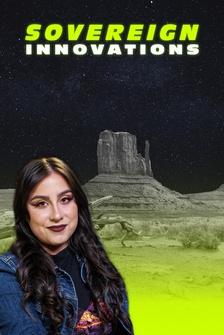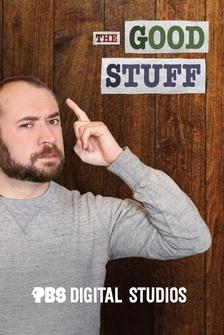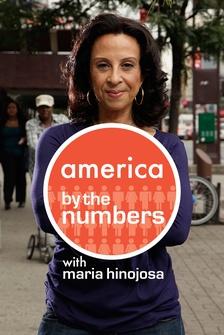-Welcome to part two of my trip to Jerusalem.
There's so much to see and explore in this ancient city, from walking the Via Dolorosa to being draped in fabric fit for a pope, enjoying local food in those small places you tuck into, and traveling to more hidden places and arriving at a time thousands of years ago.
I've connected to people both within and outside its wall, and I've even gotten my first tattoo, the initials of my children.
Already this city has left its mark, and I'm only halfway through.
As a traveler, I come with an open heart and mind to experience a city like no other on Earth.
-L'chaim.
-L'chaim.
This is part two -- Jerusalem.
[ Upbeat tune plays ] I'm Samantha Brown, and I've traveled all over this world.
And I'm always looking to find the destinations, the experiences, and, most importantly, the people who make us feel like we're really a part of a place.
That's why I have a love of travel and why these are my places to love.
Samantha Brown's "Places to Love" is made possible by... [ Birds chirping ] ♪♪ ♪♪ ♪♪ ♪♪ ♪♪ ♪♪ -Oceania Cruises is a proud sponsor of public TV and "Samantha Brown's Places to Love."
Sailing to more than 600 destinations around the globe, from Europe to Asia and Alaska to the South Pacific.
Oceania Cruises offers gourmet dining and curated travel experiences aboard boutique, hotel-style ships that carry no more than 1,250 guests.
Oceania Cruises.
Your world, your way.
-Jerusalem is a vital spiritual center of Christianity, Judaism, and Islam.
So I visited a mosque that was built in the 12th century and the sacred center of Judaism, the Western Wall.
And this morning I'm heading towards one of the most important sites in Christianity, the Church of the Holy Sepulchre.
We are in a place where all Christians want to come and experience.
What do they want to do?
-Well, the first thing that I would want to say to a pilgrim that's coming here is to discern whether or not they've come for a visit or a pilgrimage... -Okay.
-...because those who come for a visit come to see the way things were 2,000 years ago, whereas, on a pilgrimage, people come to see how things are today with the risen Lord present among them.
My name is Father Fergus Clarke.
I'm a Franciscan friar of the Custody of the Holy Land, and I come from a small village in Ireland called Virginia, which is 52 miles northwest of Dublin.
Currently, I am one of the organists at the basilica of the Holy Sepulchre.
Now, in this particular church, the church covers some of the most important areas for the mysteries of our faith.
That is, the Calvary where Jesus was crucified, and the significance of that, the place where he was buried, and the significance of that also because it is the same place as his resurrection.
-Mm-hmm.
So, Father, this is the anointing stone here, and I am, um, absolutely amazed right now of just how peaceful and, um, dare I say, um, empty this church is right now, because everything I've ever seen of this, it is thronged with people.
Have I spoke too soon?
-I'm afraid to say yes.
-[ Laughs ] ♪♪ I spoke too soon.
-Yes.
The stone itself, in our eyes, has become a holy place through the prayers and faith of people for centuries coming here, touching these stones, and this stone helps us remember that Jesus was anointed after his death like they would anoint the body of a king.
-Okay.
-It's a statement about Jesus.
And as we can see, people, pilgrims venerating this stone because they believe that Jesus' body was placed on this.
-Mm-hmm.
-This is a structure which was built in 1810, replacing one that was there before.
There have been about -- throughout history, about six different structures built over the precise spot where Jesus' body was laid.
-Mm-hmm.
-And so people, as we can see here, are lining up to have their opportunity to go inside and renew their own faith by saying they visited the very place, not just where he was crucified, not just where he died and was buried, but where he rose from the dead.
Because that's central to my faith.
Even non-Christian scholars agree that he was buried in what's now covered by this particular structure.
As you can imagine, from the numbers of people that are waiting in line, sometimes for two hours or longer, they don't get much time to savor the moment.
People will come in, they will just see a marble slab cut in half, which was cut in half when it was placed there in the 1500s to make sure it wouldn't be worth stealing.
They will have time to kneel down and say a very brief prayer and then to leave to allow the next group to come in.
-They've waited their entire lives to come here.
-It's the trip of a lifetime... -Yes.
-...and they don't want to lose out on it.
-And right here is where you get a real sense that the church was built upon a real place.
Like you said, Calvary is up on a hill.
Here's the hill.
-Yes, this is in fact, the Rock of Calvary.
It was on top of this rock in a very public place that Jesus was crucified.
-And you have a -- behind a locked door so people don't take a little chip of it, as well.
-That's a perennial temptation.
-[ Chuckles ] You talk about mysteries.
Does this church hold even mysteries for you?
-It breeds mystery.
-Mysteries like these crosses carved sometime in the 15th century.
Once thought to be a type of graffiti by pilgrims, it's now believed these crosses were more deliberately carved by a few mason artists, but there are still a lot of unknown questions for Father Fergus, as well.
How many levels are there, Father Fergus?
-Well, I'm only here 25 years.
I can't be expected to know the answer to that question already.
-[ Laughs ] The one thing you notice about Jerusalem right away is just how incredibly dense this city is.
Lots of people, lots of buildings.
But when you look out and onto the rooftops, you realize, oh, my goodness, there's a ton of space.
-Yeah.
-So was that the thought, let's turn these empty spaces into something that we can use?
-We look at the city in a different way.
Even in the eastern part of Jerusalem especially, we have a lack of open spaces, green open spaces, green structure, so we started to think how we can go into the private spaces, which is roofs, terraces, and so on.
I'm Hanan Amasheh.
I'm an architect and urban planner here in East Jerusalem.
-I'm on the rooftop of the Central Library in East Jerusalem, the Palestinian side of the city.
This is where the nonprofit Sinsila Center has discovered how the act of beekeeping combines community building and economic empowerment in life-changing ways.
-We found out that the key person is the woman because she's spending more time at house.
They want to make income maybe to develop their commercial situation, so we found out that they can do things on the roofs, and it was the bees.
They can keep bees on their roofs, harvesting honey, make products from the wax, and at the end of the season, we go and help them with the harvesting and then make it as a product in the jars.
And we sell it and we give them back 75 of the -- -75%.
Wow.
-Percent of the income.
-Okay.
Wow.
-Yeah.
-Founded in 2019, the Sinsila center began with 15 women and has grown to over 115.
And those who don't have roofs can come take care of the library bees.
-They are coming once, twice a week to take care of their beehives.
They are helping, uh, our team here just to inspire people that you can make the change from small things and things that's in front of you all the time, but you didn't take care of it.
-What has been the response of the women who are a part of this?
Are you getting a reaction that you actually weren't expecting?
-Yes, even more than what we expected.
One of the women, her husband were against beekeeping and she just decided to have bees.
And then she came and told us that he's doing things now.
He's changing our roof just to have more space because of the bees.
And he fell in love with them.
So it's changing even the -- the whole family interaction with the -- with the species and the bees.
[ Men speaking native language ] -How big is this market?
-Biggest market that we have in Israel.
We have more than 3,000 different vendors worth in this market -- a lot.
I'm Tali Friedman, I'm a chef.
I'm the owner of the Atelier here in Machane Yehuda Market.
I'm also the head of the market association, which means I represent all the vendors in this beautiful market.
-So I've been to so many markets around the world, and they really speak to the culture as it is now.
So what does Machane Yehuda tell us about Jerusalem and the people who live here now?
-From our eyes, Machane Yehuda Market is the microcosm of the Israeli society.
-Whoa.
-Whatever you want to learn about the Israeli society, you just need to come to this market and be here and just sit, have a coffee... -Uh-huh.
-...and just look at the people.
You see the diversity of the society.
Everyone shop in this market.
-No matter where you are in the economic strata of life, you come here.
-This market talks all the language in one space.
You'll see Muslim shops in this.
-Mm-hmm.
Christians come and shop here.
Ultra-ultra-Orthodox.
You see everyone in this market.
-So the food, the produce that you buy here, is it -- it looks local.
-99% of the things that you'll see here in the market is local, grow here in Israel.
The vendors here are very pleasant.
Like, they are very, very warm and welcome.
-They're people people.
-Yes.
-Lemon ginger tea.
-Lemon ginger.
Oh my favorite.
-Exactly what I need today.
-Exactly.
How did you know?
-Cheers.
-Mm.
-Each vendor know his clients... -Mm-hmm.
-...and this is what's special about this market.
-L'chaim!
-This is the etrog.
-What is that called?
-It's called etrog.
-It's etrog.
It's the ancestors of the lemon.
It's very biblical fruit.
-This is Yemenite etrog.
-And just eat it?
-Yes, the white part, we make it for the juices and we make some jam and to eat it.
And the peel we use for the outside, for the skin.
-Uh-huh.
Oh.
-Wow.
-This is made of pomegranate, apple, and cayenne pepper.
It's very good for cleansing the body.
-Happy day today.
Happy day.
-Always when you make juice for somebody and you make something, you have to do it in love.
-Oh.
-Our father used to say it's the most, uh, important ingredient.
Even if it's water, with love inside, they will feel it.
[ Chuckles ] -Thank you, guys.
-You want to hug them, right?
You want a hug?
-Yeah, I do want a hug.
Aww, thank you, thank you.
-Pleasure.
-Well, now I'm very hungry.
-Oh.
-Fortunately, Tali knows every square foot of this market, and as a chef, she knew exactly where to take me -- Azura.
Wow.
And what type of food, may I ask, do you -- -Mediterranean food.
-Mediterranean, okay.
-Mediterranean, yeah.
-Turkish.
Mostly Turkish.
-Okay.
-My father came from Turkey.
Kurdish.
Iraqi.
-Kurdish.
Iraqi.
-Even Moroccan style we have.
-I see here a Moroccan style.
-Exactly.
-And is that the blend that we feel here in Jerusalem?
And was it a surprise to you that people would accept a cuisine that was just across the board of Mediterranean, or is it -- -No, it's not surprise because, little kids, people that came from Europe, Jewish from Europe, and Jewish that born in Syria or in Iraq or in, uh, uh, Turkey, and they coming to eat, sit at the same place, they eating the same food.
-So what is this food?
I've never seen anything like it, so it is all foreign to me.
This is kubbeh.
This is Iraqi.
-Okay.
Iraqi.
-Iraqi originally.
This is fried potatoes and beef cooked in a stew.
-Sofrito.
-Sofrito.
Beef sofrito.
-And how do you cook all of these dishes?
Because your restaurant looks rather tiny.
-We making everything by our hands.
We have many workers to make the food.
-They come here at 4:00 in the morning to start cooking.
This rice, it's not a 20-minutes rice.
It cooks for hours.
-It's sitting on a kerosene burner.
We cook on a kerosene burner.
-Oh, that's -- that's low.
-Yeah, that's very slow.
-Low and slow.
-We have gasoline here in the kitchen.
-Wow.
-Like old time.
-You know, uh, back in the States, if you mentioned that, you know, it's Jewish food, a lot of our Jewish food is -- is sort of delicatessen.
-I know.
-So this is a huge education that there's Jewish food, and then there's Israeli food, correct?
-Yeah.
-All kind of culture.
Mixed of culture.
-I think it's took us a while to create a cuisine here in Israel... -Exactly.
-...but we took, uh, the DNA of each culture that came here and use it.
-Oh, my gosh.
Chiko, that is amazing.
-This is the most popular dish in the restaurant.
-Wow.
When I first arrived in the Old City, one of the first things I noticed were the street signs.
I thought they were beautiful, just in their simplicity and their way to help me through, and to know that the descendant of the artist still lives in you, I was -- I couldn't believe that.
-Yes.
-So your father had basically that job to make all the signs in the Old City?
-In the Old City, yes.
So he started in 1966.
It was the Jordanians here in Jerusalem.
They commission him to do the street signs on ceramic tiles in Arabic and English, two languages.
-Mm-hmm.
-Now, '67 come the Israelis.
They say, "We like what you did with the signs, but please add our language on top."
So they provide him with the Hebrew fonts and he does the Hebrew after '67.
-And so when you look at a sign, you can tell when the Hebrew's added that that was pre-'67, and then after '67 it was all incorporated on the same tile?
-Exactly.
-Wow.
So you just see a bit of history even in the street signs.
-I'm Hagop Karakashian, and I'm the third generation in my family, continuing this tradition of Armenian ceramics in Jerusalem.
-So this is Armenian art, but it is of old Jerusalem.
-It doesn't exist anywhere else.
It's very specific to Jerusalem.
-How so?
-Back in Turkey, my grandfather used only floral patterns because in Islam it was forbidden to portray living creatures like birds, gazelles.
But here his repertory opened up.
There was no one telling him what he could do or he could not do.
-Mm-hmm.
-So he painted peacocks, birds, gazelles, fish, all kinds of symbolism, representing all the religions.
That's the nice thing about Jerusalem.
Uh, you can be who you want to be.
-Do you have any pieces left from your grandfather?
-Of course I do.
-[ Laughs ] -I'll show you one.
There's one right here.
So this is a vase that he painted... -Oh.
-...and it's the tree of life.
-Okay.
-This was done before 1948.
-And it says Palestine.
-Yes, it says Palestine, which means it was made during the British Mandate.
-Mm-hmm.
-And back then they used local clay, which was red.
But before decorating, they dipped it in a white slip... -Okay.
-And here you'll see the finger marks.
He's holding the pot.
He's dipping it in the white slip.
And then he's waiting for it to dry so he can draw this beautiful picture here.
-Yes.
Grandfather was a beautiful painter.
-Yes.
If you find one, you should buy it.
-[ Laughs ] And where is your work?
-So one of my designs is this tabletop.
-Mm-hmm.
-Uh, two peacocks.
Peacocks represent or symbolize long life in Armenian tradition.
It's a very serene and peaceful, uh, scene.
-Mm-hmm.
-Now, when I come to work, I close the door, and I work on pieces like this.
That separates me from the tension outside.
-[ Laughs ] In addition to Jerusalem Pottery being a retail store as well as an onsite workshop, Hagop regularly offers ceramics classes where he showed me the astounding technique that gets the designs onto the ceramics in the first place.
-We actually draw the design on a piece of paper like this with pencil.
-With pencil, right.
-And then what we do is make pinholes.
Pinholes with a pin by hand.
It's hours and hours of work.
So this is one of my grandfather's stencils from the 1950s.
-Oh, beautiful.
-Now, the holes are so that we can transfer the design to a tile.
This is charcoal, which I grind.
When I pass this over the stencil, charcoal goes through the holes.
It leaves the design on tile.
-Oh, my gosh.
So there are hundreds of tiny holes.
They're so tiny I can't see them with my eye.
-Yes, this is how my grandfather did it, and that's how we continue.
I feel there's a bond between me and the city.
There's a reason why I'm here.
There's a reason why I'm coming to work every morning.
What you see on the news is, uh, different from what you see when you visit Jerusalem.
-Half-an-hour away from Jerusalem are the Judean Hills, which is where you'll find hundreds of vineyards producing what are becoming some of the most esteemed fine wines in the world.
[ Sighs ] While I'm sitting here, and this has been my entire trip to Jerusalem, it just sort of hits me in waves where I am and the history of the land that I'm experiencing.
And Israel, the winemaking tradition, uh, goes way back.
Right?
How many -- 2,000 years, should we say?
-No, more.
Much more.
-Mm-hmm.
-No, we found in Israel 11,000 years.
-No, that's incredible.
-Yeah.
-That's incredible.
-I am Eli Ben-Zaken, founder and winemaker of Domaine du Castel.
And lately also our new winery Raziel.
I had no dream of becoming a winemaker.
I decided to play with making some wine.
I planted, uh, just a few -- few vines next to the house, in '88, and in '92 I made two barrels.
-Two barrels.
Okay.
-2 barrels is 600 bottles.
-Oh, well, that's a pretty -- a pretty impressive first time.
-Exactly.
-One of those 600 bottles wound up in the hands of the head of the wine department at Sotheby's auction house, and her review changed Eli's life.
-It said that it's a classic... -Mm-hmm.
-...a real tour de force.
-Mm-hmm.
-It meant that practically, uh, you're sitting here on a gold mine.
Are you going to start digging?
[ Both laugh ] -So you started with two barrels that you made in... -'92.
-...'92.
How many bottles do you make now?
-About 400,000 bottles.
-[ Laughs ] Wine has been made since the time of Jesus, but Castel Winery is credited for putting Israel on the map for serious, high-quality wines.
What makes a wine kosher?
-It has to be made by religious Jews.
-Mm-hmm.
-All the employees that touch the wine from the reception of the grapes, this has to be only handled by religious Jews.
-I see.
-The grapes, anyone can pick.
-Okay.
Alright.
-When they arrive here, and they're beginning to be handled, it has to be a religious person.
In the Jewish religion, you have to drink wine.
There are obligations.
You drink wine with a blessing.
-Okay.
-You fill a big cup, the father drinks a sip, then he gives to the mother and the glass goes around.
-Okay.
Even to, like, kids?
-Yeah.
-Oh, so everyone has to drink wine?
-My Italian grandmother was pushing glasses of cheap Chianti to me, saying, "Drink it.
It's good for you."
And it was cheap Chianti that burned all the way down.
-How old were you?
-6, 7.
She put me off wine for a long time.
[ Both laugh ] This is a fantastic profession because you make people smile.
So it's really very lucky to see people smiling while drinking something I have made.
-There are so many parts of the special mosaic of Jerusalem.
Each one contributes its own piece of culture and art and ability.
Everyone's coming to Jerusalem and contributing something to the local culture.
-When you come on a visit to the basilica of the Holy Sepulcher, please remember it's a functioning church.
It is not a museum.
The amazing thing is here that we're sharing this church with many religious cultures and traditions, in complete agreement on the importance of what God did in this place.
-And you welcome all of them.
-We do our best.
-Mm-hmm.
[ Chuckles ] -I think it's all about the people here in Jerusalem, all the diversity of the society that gather here to this city.
It means that it accept and welcoming everyone from all around the world.
This is a city that belongs to everyone.
One this is what Jerusalem is all about.
-I want people to know that we can create hope in the most complicated cities in the world here in Jerusalem.
-When you get to enjoy new experiences in a destination thousands of years old, when who you listen to, how you prayed, and where you walked will resonate with you for the rest of your life, that is when we share a love of travel, and that is why Jerusalem will always be a place to love.
-For more information about this and other episodes, destination guides, or links to follow me on social media, log on to placestolove.com.
Samantha Brown's "Places to Love" was made possible by... [ Birds chirping ] ♪♪ ♪♪ ♪♪ ♪♪ ♪♪ ♪♪ -Oceania Cruises is a proud sponsor of public TV and "Samantha Brown's Places to Love."
Sailing to more than 600 destinations around the globe, from Europe to Asia and Alaska to the South Pacific.
Oceania Cruises offers gourmet dining and curated travel experiences aboard boutique, hotel-style ships that carry no more than 1,250 guests.
Oceania Cruises.
Your world, your way.
♪♪ ♪♪ ♪♪ ♪♪

